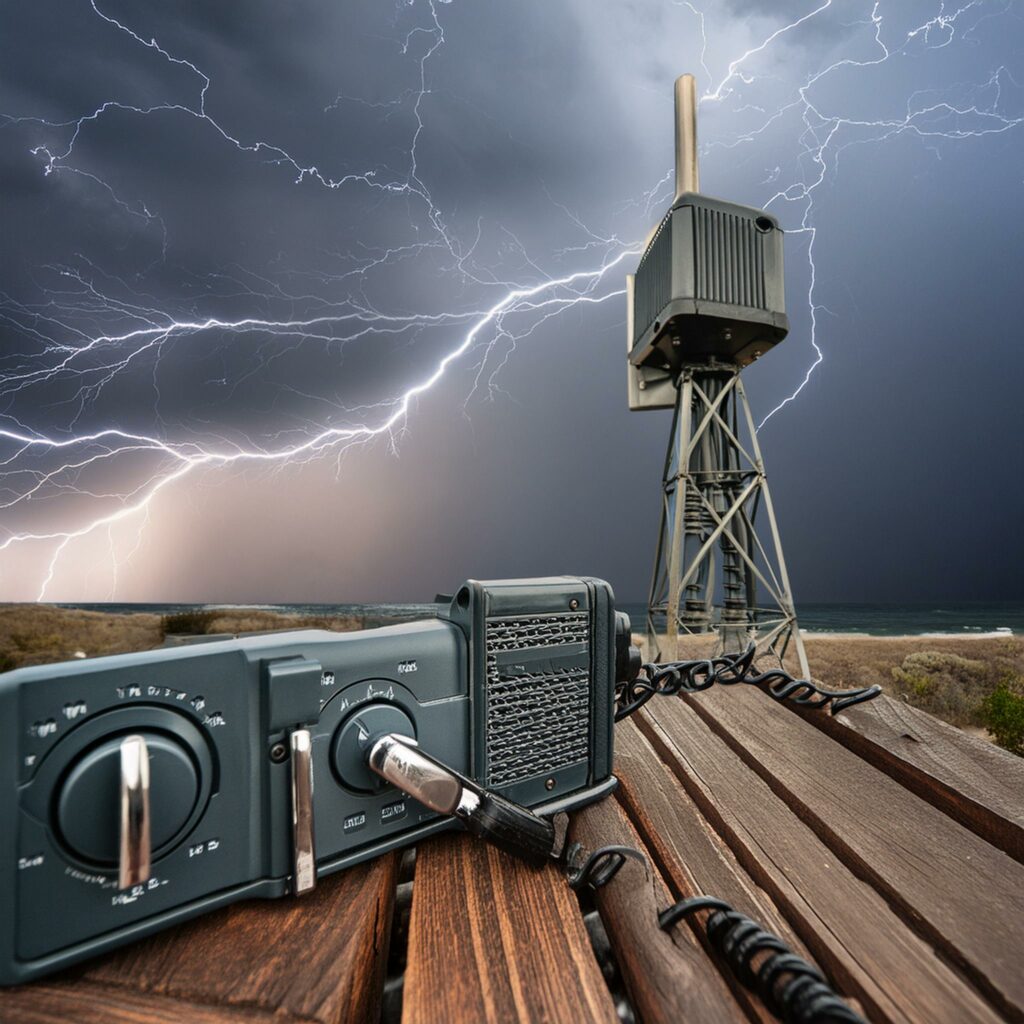Why You Need 50 Watts During A Severe Storm
Staying Connected: Why You Need 50 Watts During A Severe Storm

Why 50 Watts of Transmission Power is needed during a Storm Watch
In the realm of modern communications, where the internet and satellites dominate our connection to the world, it’s easy to overlook the critical role of more traditional forms of communication, especially during adverse weather conditions like thunderstorms. One such technology that comes to the forefront during such times is the 50-watt radio transmitter. Let’s delve into why this seemingly modest power level becomes crucial during thunderstorms.
The Power of 50 Watts:
Firstly, what exactly does 50 watts signify in radio communication? In simple terms, it denotes the strength or power output of a radio transmitter. During normal weather conditions, lower wattages may suffice for communication over shorter distances or in areas with minimal interference. However, thunderstorms introduce a host of challenges that necessitate higher power levels to maintain reliable communication.
Challenges Posed by Thunderstorms:
Thunderstorms are characterized by intense electrical activity, including lightning strikes and atmospheric disturbances. These phenomena create electromagnetic interference that can severely disrupt radio signals. Lower power transmitters are more susceptible to this interference, leading to signal degradation or complete loss of communication. This is particularly problematic in emergency situations where uninterrupted communication is critical for public safety and coordination of rescue efforts.
Ensuring Reliability:
A 50-watt transmitter provides several advantages in such scenarios:
1. Increased Signal Strength: Higher wattage allows signals to punch through interference caused by lightning and atmospheric disturbances more effectively. This ensures that communications remain clear and reliable even in adverse weather conditions.
2. Extended Range: Increased power output extends the range over which communications is maintained. This is especially important in rural or remote areas where communication infrastructure may be sparse, and where storms can exacerbate existing connectivity challenges.
3. Emergency Response: During emergencies such as severe weather events, natural disasters, or accidents, quick and effective communication can be a matter of life and death. Emergency responders, including police, fire departments, and medical personnel, rely on robust communication channels facilitated by higher power transmitters to coordinate their efforts and provide assistance swiftly and efficiently.
Applications in Practice:
The importance of 50-watt transmitters is underscored by their widespread use in emergency response networks, amateur radio operations, and military communications. These systems are designed not only to withstand adverse weather conditions but also to ensure continuous operation under challenging circumstances.
Looking Ahead:
As technology advances and communication networks evolve, the role of 50-watt transmitters may continue to adapt. However, their fundamental importance in maintaining connectivity during thunderstorms and other adverse weather events remains steadfast. Efforts to enhance resilience, improve efficiency, and expand coverage are ongoing, ensuring that communities are better prepared to face the challenges posed by nature’s fury.
In conclusion, while the digital age has transformed how we communicate, the reliability and resilience of 50-watt radio transmitters during thunderstorms highlight their enduring relevance. As we navigate an increasingly interconnected world, these technologies serve as a reminder of the importance of robust communication infrastructure in safeguarding lives and facilitating effective response efforts in times of crisis.
When storms hit, we are some of the first volunteers to respond. Get involved today.
